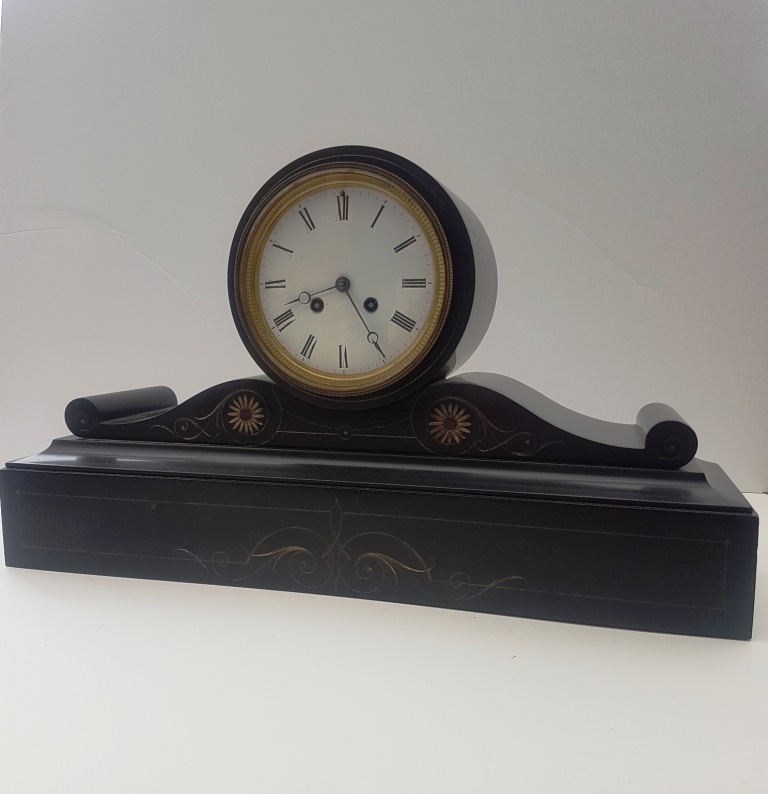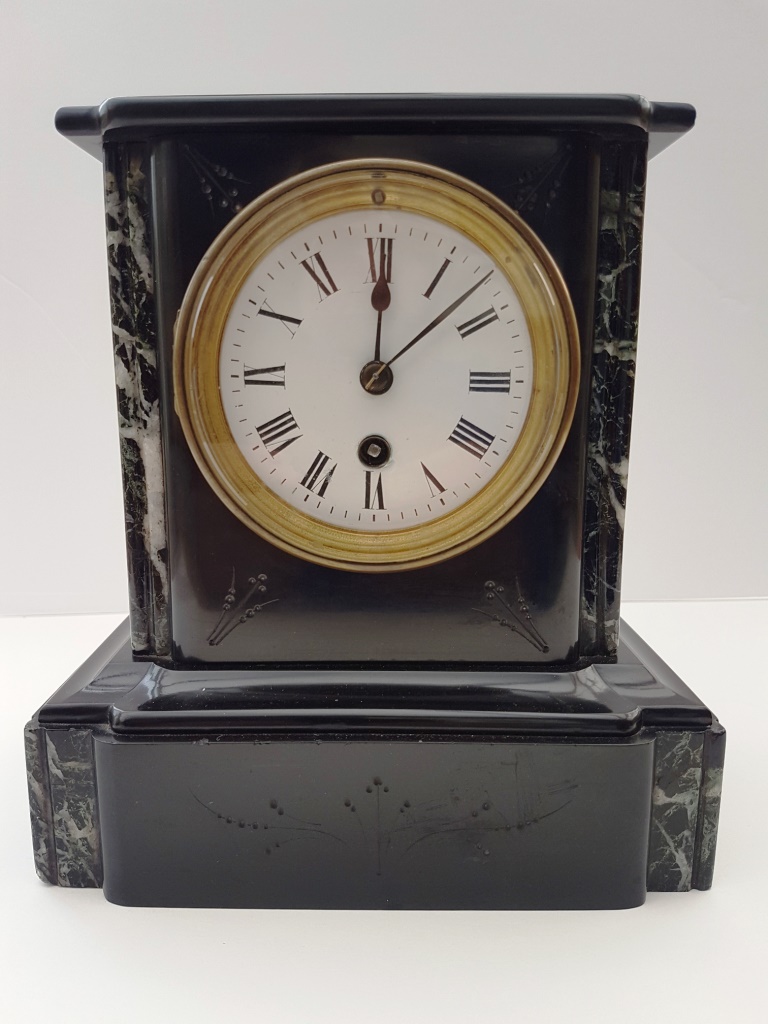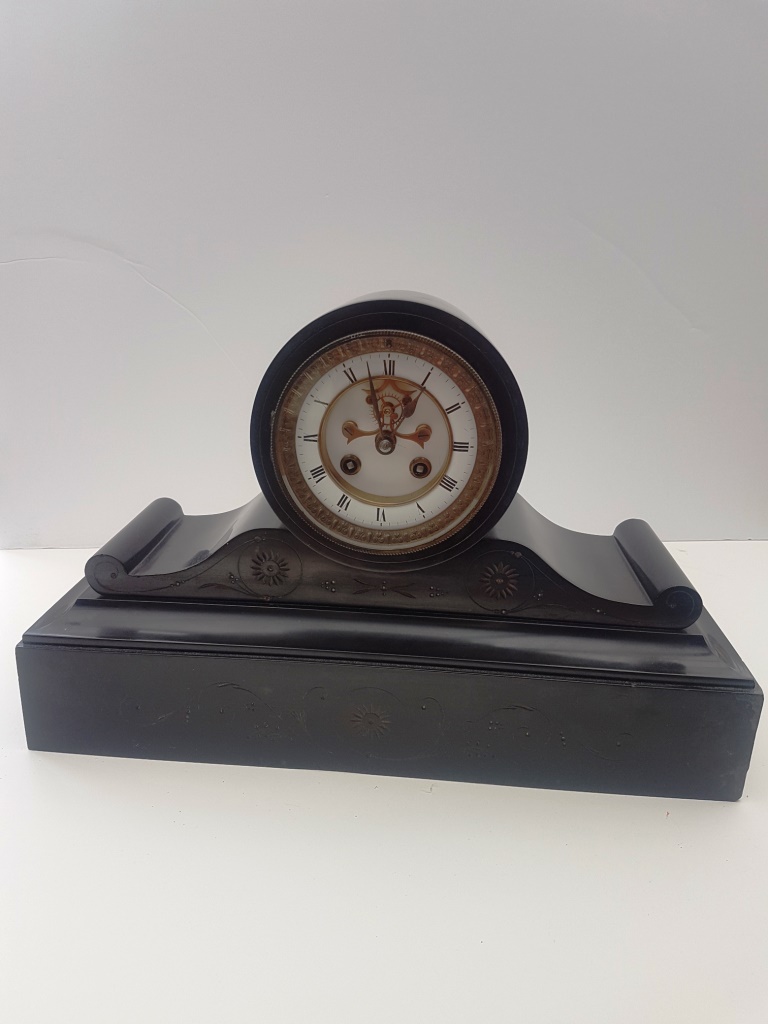Sometimes searching the internet tells you not what you want to know but what others decide you ought to want to know. Or it tells you what it knows, whether or not that’s what you asked for. It is limited by what you are able to ask it – which depends on what you already know.
Ultimately, irritatingly, too often Google tells you simply what someone wants to sell you. That’s why, occasionally, the internet just doesn’t do it for me.
What could be easier?
It should have been simple enough. I wanted more facts about those black mantel clocks which were such a feature of homes in the late Victorian era. Setting Google to work, what I actually got was a lot of sales pitches and an abundance of misinformation – fake news!
Perhaps that is testimony to the effectiveness of SEO management by antique dealers and on-line sales platforms. But when you genuinely want information, it is just plain annoying.
The answer may surprise you
I already had an idea about why those clocks were so popular. What I wanted to know was what they were made of. The answer may surprise you. And unless you know the answer, finding it isn’t easy.
I think you will be familiar with them. They are black, sometimes with marble pillars or gilded decorations. They are often in the form of simple cubes. Others have wider scrolled bases and the clock movement sits in a barrel-shaped housing. They have both a simplicity and a grandeur about them. There is something dignified in their presentation, even when the black is relieved by gold leaf or coloured marble or vibrant green malachite insets.
A nation in mourning
Black slate or black marble clocks came into their own after the death of Prince Albert, Queen Victoria’s consort, in 1861. The nation went into mourning. From that time on and until her own death in 1901, Victoria wore black. In sympathy (or out of deference), the nation started painting ornaments black, decorating homes with black drapes and buying black clocks. Sombreness was the order of the day.
But the majority of the clocks in question are made neither of slate nor of marble. You wouldn’t easily know that if you relied on your Google search. You would find endless antiques sites looking to sell you their ‘first class examples’ in a range of styles – although click through and you will generally find the ones on show are already sold. You’ll find Ebay or Gumtree vendors who will tell you helpfully ‘it almost certainly works but I don’t have a key so I can’t be sure’ (you may risk buying a clock from this vendor, but please don’t buy a used car).
You will find experts who will give you invaluable facts such as ‘popular in France in the 18th and 19th centuries, they typically needed to be wound in order for them to function properly’. Well I never!!
And they would all perpetuate the myth that all these clocks were made from slate or marble.
I tightened my search terms – ‘Victorian black mantel clocks materials’ then adding ‘what are they made of’ but still the same sites came to the fore, just selling their wares and not answering my question.
Ultimately I got there, but only because, beyond merely the internet, I knew where to look.
Nerd alert!
Warning – I should post a ‘nerd’ alert here. I am about to explain.
The Price Guide to Collectable Clocks 1840-1940 by Alan and Rita Shenton has a whole chapter on marble cased clocks. It differentiates between genuinely marble clocks and the Belgian marble clocks. Belgian marble, of which so many Victorian clocks were made, isn’t marble at all. Marble is a metamorphic rock, but Belgian marble is actually a limestone (which as you all know is a calcareous sedimentary rock) extracted in Wallonia. There are examples of similar rocks found in Derbyshire and used in clock case making.
Some clock cases were made of slate from Wales or from Caithness, but most were made from the Belgian limestone, polished and glued together, or held together with blobs of plaster of paris, and sometimes strengthened with metal wire supports. Glues then were not necessarily built to last for 150 years and metal degrades. That’s why some experts advise not to let the cases get wet or stay wet and when moving them to carry them ‘like you would a baby’.
Hold them like a baby
Over 120 years old they may be, but these beautiful timepieces are remarkably adaptable to modern homes. They are neat, squat, stylish and rich in history, just lovely to own. So now, in the true spirit of the internet, you might choose to go to my ‘clocks’ or ‘books’ pages. There, you might find a first class example of just what you are looking for!
*
If you have a black Victorian mantel clock and it is faded and jaded don’t worry. The excellent clock and watch components and materials supplier Meadows & Passmore has a product called Marblack ™ which will restore it wonderfully. Find them on the internet, and you can download a pdf instructing you how to use it. Google search ‘Victorian-black-slate-mantel-clocks-cleaning’ and they come up first, before all the Ebay listings. Remarkable. I guess it’s all about knowing what you are looking for!
If you enjoyed this, please feel free to post a comment or sign up at the top of the ‘reflections’ page to be notified of future posts.



Brilliant. Never realised that the mourning of Albert infiltrated the clock world. Thanks Hugh for all the geological stuff regarding ‘marble’ clocks.
A website with both books & not overpriced clocks !! amazing where have you been hiding ?. Watching with great interest .
Thanks David. Spread the word and I’ll keep writing blogs about all things clocks and more – and listing clocks and books for sale.